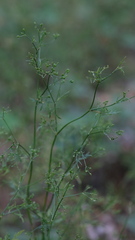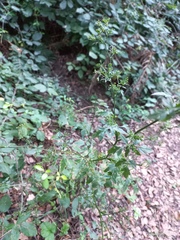©fmunoz, some rights reserved (CC-BY-NC)
©Pere Barnola, some rights reserved (CC-BY-SA)
©Pere Barnola, some rights reserved (CC-BY-SA)
©Pere Barnola, some rights reserved (CC-BY-SA)
©matthew_w, some rights reserved (CC-BY-NC)
©Joe Dillon, some rights reserved (CC-BY)
©Joe Dillon, some rights reserved (CC-BY)
©Joe Dillon, some rights reserved (CC-BY)
©Joe Dillon, some rights reserved (CC-BY)
©Joe Dillon, some rights reserved (CC-BY)
©Joe Dillon, some rights reserved (CC-BY)
©Joe Dillon, some rights reserved (CC-BY)
©tekuri, some rights reserved (CC-BY-NC)
©Daniel Cahen, some rights reserved (CC-BY)
©Daniel Cahen, some rights reserved (CC-BY)
©jltasset, some rights reserved (CC-BY-NC)
©jltasset, some rights reserved (CC-BY-NC)
©jltasset, some rights reserved (CC-BY-NC)
©Lera Miles, some rights reserved (CC-BY)
©timharris, some rights reserved (CC-BY-NC)
©timharris, some rights reserved (CC-BY-NC)
©foxandcubs, some rights reserved (CC-BY-NC)
©Stephen Thorpe, some rights reserved (CC-BY-NC)
©Stephen Thorpe, some rights reserved (CC-BY-NC)
©chamaeleo, some rights reserved (CC-BY-NC)
©Ruth Ripley, some rights reserved (CC-BY-NC)
©Ruth Ripley, some rights reserved (CC-BY-NC)
©Ruth Ripley, some rights reserved (CC-BY-NC)
©kate-marie, some rights reserved (CC-BY-NC)
©kate-marie, some rights reserved (CC-BY-NC)
©manuelramalho, some rights reserved (CC-BY-NC-SA)
©manuelramalho, some rights reserved (CC-BY-NC-SA)
©manuelramalho, some rights reserved (CC-BY-NC-SA)
©foxandcubs, some rights reserved (CC-BY-NC)
©foxandcubs, some rights reserved (CC-BY-NC)
©Valentin Hamon, some rights reserved (CC-BY-NC)
©Valentin Hamon, some rights reserved (CC-BY-NC)
©Valentin Hamon, some rights reserved (CC-BY-NC)
©Valentin Hamon, some rights reserved (CC-BY-NC)
©Valentin Hamon, some rights reserved (CC-BY-NC)
©Daniel Cahen, some rights reserved (CC-BY)
©Daniel Cahen, some rights reserved (CC-BY)
©Daniel Cahen, some rights reserved (CC-BY)
©Daniel Cahen, some rights reserved (CC-BY)
©Valentin Hamon, some rights reserved (CC-BY-NC)
©Valentin Hamon, some rights reserved (CC-BY-NC)
©Valentin Hamon, some rights reserved (CC-BY-NC)
©Valentin Hamon, some rights reserved (CC-BY-NC)
©foxandcubs, some rights reserved (CC-BY-NC)
©foxandcubs, some rights reserved (CC-BY-NC)
©Emma Creasey, some rights reserved (CC-BY-NC)
©Emma Creasey, some rights reserved (CC-BY-NC)
©foxandcubs, some rights reserved (CC-BY-NC)
©islandwildlifespotter, some rights reserved (CC-BY-NC)
©Valentin Hamon, some rights reserved (CC-BY-NC)
©Valentin Hamon, some rights reserved (CC-BY-NC)
©foxandcubs, some rights reserved (CC-BY-NC)
©alice-b, some rights reserved (CC-BY-NC)
©alice-b, some rights reserved (CC-BY-NC)
©Valentin Hamon, some rights reserved (CC-BY-NC)
©Robert H. Wardell, some rights reserved (CC0)
©Robert H. Wardell, some rights reserved (CC0)
©Valentin Hamon, some rights reserved (CC-BY-NC)
©Valentin Hamon, some rights reserved (CC-BY-NC)
©Pere Barnola, some rights reserved (CC-BY-SA)
©Pere Barnola, some rights reserved (CC-BY-SA)
©Valentin Hamon, some rights reserved (CC-BY-NC)
©Valentin Hamon, some rights reserved (CC-BY-NC)
©Valentin Hamon, some rights reserved (CC-BY-NC)
©Valentin Hamon, some rights reserved (CC-BY-NC)
©Valentin Hamon, some rights reserved (CC-BY-NC)
©Pere Barnola, some rights reserved (CC-BY-SA)
©Pere Barnola, some rights reserved (CC-BY-SA)
©Valentin Hamon, some rights reserved (CC-BY-NC)
©Valentin Hamon, some rights reserved (CC-BY-NC)
©Luis Brown, some rights reserved (CC-BY-NC)
©Luis Brown, some rights reserved (CC-BY-NC)
©Benjamin Wright, some rights reserved (CC-BY-NC)
©Benjamin Wright, some rights reserved (CC-BY-NC)
©Benjamin Wright, some rights reserved (CC-BY-NC)
©bizzbuzz, some rights reserved (CC-BY-NC)
©lantinantoine, some rights reserved (CC-BY-NC)
©lantinantoine, some rights reserved (CC-BY-NC)
©lantinantoine, some rights reserved (CC-BY-NC)
©Piermario Maculan, some rights reserved (CC-BY-NC)
©Piermario Maculan, some rights reserved (CC-BY-NC)
©Piermario Maculan, some rights reserved (CC-BY-NC)
©Piermario Maculan, some rights reserved (CC-BY-NC)
©Piermario Maculan, some rights reserved (CC-BY-NC)
©foxandcubs, some rights reserved (CC-BY-NC)
©ellasophia, some rights reserved (CC-BY-NC)
©samkelly, some rights reserved (CC-BY-NC)
©samkelly, some rights reserved (CC-BY-NC)
©samkelly, some rights reserved (CC-BY-NC)
©samkelly, some rights reserved (CC-BY-NC)
©samkelly, some rights reserved (CC-BY-NC)
©jreh, some rights reserved (CC-BY-NC)
©Yves Bas, some rights reserved (CC-BY)
©Yves Bas, some rights reserved (CC-BY)
©Yves Bas, some rights reserved (CC-BY)
©foxandcubs, some rights reserved (CC-BY-NC)
©glanville, some rights reserved (CC-BY-NC)
©Piermario Maculan, some rights reserved (CC-BY-NC)
©Piermario Maculan, some rights reserved (CC-BY-NC)
©Piermario Maculan, some rights reserved (CC-BY-NC)
©Piermario Maculan, some rights reserved (CC-BY-NC)
©Piermario Maculan, some rights reserved (CC-BY-NC)
©Charles Joynson, some rights reserved (CC-BY-NC)
©jsilloth, some rights reserved (CC0)
©twig777, some rights reserved (CC0)
©twig777, some rights reserved (CC0)
©twig777, some rights reserved (CC0)
©twig777, some rights reserved (CC0)
©sylviawilson, some rights reserved (CC-BY-NC)
©nicolamp, some rights reserved (CC-BY-NC)
©nicolamp, some rights reserved (CC-BY-NC)
©Jonathan Hughes, some rights reserved (CC-BY-NC)
©Luis Brown, some rights reserved (CC-BY-NC)
©Luis Brown, some rights reserved (CC-BY-NC)
©crypticww, some rights reserved (CC-BY-NC)
©crypticww, some rights reserved (CC-BY-NC)
©jeni8484, some rights reserved (CC-BY-NC)
©slow_walker, some rights reserved (CC-BY-NC)
©slow_walker, some rights reserved (CC-BY-NC)
©slow_walker, some rights reserved (CC-BY-NC)
©Pere Barnola, some rights reserved (CC-BY-SA)
©Pere Barnola, some rights reserved (CC-BY-SA)
©kathyhollidge, some rights reserved (CC-BY-NC)
©Julien Bottinelli, some rights reserved (CC-BY-NC)
©Piermario Maculan, some rights reserved (CC-BY-NC)
©Piermario Maculan, some rights reserved (CC-BY-NC)
©Piermario Maculan, some rights reserved (CC-BY-NC)
©Piermario Maculan, some rights reserved (CC-BY-NC)
©Piermario Maculan, some rights reserved (CC-BY-NC)
©Piermario Maculan, some rights reserved (CC-BY-NC)
©Piermario Maculan, some rights reserved (CC-BY-NC)
©Piermario Maculan, some rights reserved (CC-BY-NC)
©Piermario Maculan, some rights reserved (CC-BY-NC)
©Eddie Pile (they/them), some rights reserved (CC-BY-NC)
©Eddie Pile (they/them), some rights reserved (CC-BY-NC)
©Eddie Pile (they/them), some rights reserved (CC-BY-NC)
©Eddie Pile (they/them), some rights reserved (CC-BY-NC)
©J Castillo, some rights reserved (CC-BY-NC)
©J Castillo, some rights reserved (CC-BY-NC)
©helenwells, some rights reserved (CC-BY-NC)
©helenwells, some rights reserved (CC-BY-NC)
©Stephen Moores, some rights reserved (CC-BY-NC)
©Stephen Moores, some rights reserved (CC-BY-NC)
©Stephen Moores, some rights reserved (CC-BY-NC)
©Stephen Moores, some rights reserved (CC-BY-NC)
©Stephen Moores, some rights reserved (CC-BY-NC)
©Stephen Moores, some rights reserved (CC-BY-NC)
©Stephen Moores, some rights reserved (CC-BY-NC)
©David Hocken, some rights reserved (CC-BY-NC)
©David Hocken, some rights reserved (CC-BY-NC)
©David Hocken, some rights reserved (CC-BY-NC)
©David Hocken, some rights reserved (CC-BY-NC)
©David Hocken, some rights reserved (CC-BY-NC)
©David Hocken, some rights reserved (CC-BY-NC)
©samkelly, some rights reserved (CC-BY-NC)































































































































































